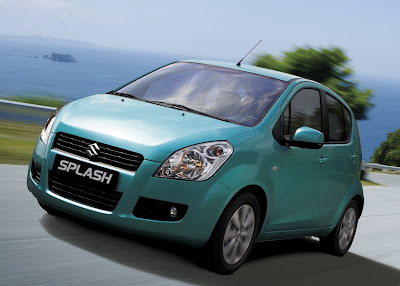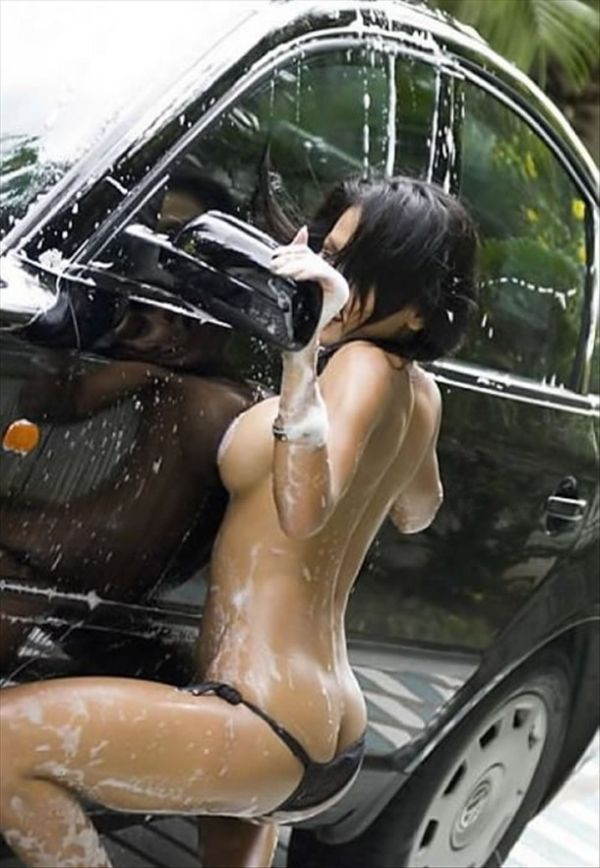
The Suzuki SX4 is a compact car developed by Japanese automakers Suzuki and sold by Suzuki (as the SX4) and by Fiat (as the Sedici) and produced since 2006. Designed by Giorgetto Giugiaro's Italdesign studio, the SX4 (an abbreviation of "Sports X-over 4 all seasons ") replaces the Aerio (some markets called Liana). The "SX 4" designation was used by American Motors (AMC) for a sporty liftback model in its all-wheel drive AMC Eagle passenger cars. Although originally intended solely for the European market, the SX4 is sold in most of Suzuki's international markets. It was introduced at the 2006 Geneva Motor Show and is manufactured at the Magyar Suzuki plant in Esztergom, Hungary, Japan, and Manesar, India. An expected 60,000 units will be produced — 2/3 to be sold by Suzuki and 1/3 by Fiat, badged as the Sedici. SX4 Crossover is also sold in Indonesia since 2007. Earlier models were directly imported from Japan (Completely Built-up/CBU), however locally-assembled version were later introduced to meet the higher-than-expected market demand. Base engines are the 1.5-litre gasoline unit identical to the one used in the Swift, 1.6-litre gasoline (with VVT) with maximum output of 102 PS (which powers Suzuki SX4 Sedan sold in India by Maruti), the new 1.6-litre VVT seen in the new Grand Vitara and a 107 PS (79 kW), 1.6-litre DDIS — along with the Fiat diesel engine with a maximum output of 120 PS (88 kW) and maximum torque of 280 N·m (207 ft·lbf). The SX4 was initially released as a five-door hatchback body style, marketed as the SX4 Crossover. With boot space of 300 litres (270 litres VDA]) and 60:40 split fold rear seats, they have a tumble/roll configuration that allows for an uninterrupted flat load area up to a maximum volume of 1,045 litres (625 litres VDA). The Sedan model, marketed as the SX4 Sport, debuted at the 2007 New York Auto Show and has been released in Japan, India, and a few Eastern European markets. It replaced the Suzuki Aerio sedan and also the Daewoo-based Suzuki Forenza sedan and station wagon.

The North American-market model arrived in 2006 as a 2007 model year as Suzuki's entry-level AWD vehicle. Differences from the European model are the offering of AWD as standard (2WD Version available in Canada, Europe, Israel and China while AWD is optional in Canada) and a single 2.0 L J20B 143 hp (107 kW) inline-4 gasoline engine. In 2007 Suzuki Auto posted the best year-end close in company history, with SX4 sales a primary contributor to this success.The U.S. base price (model year 2008) for the 5-door hatchback (marketed in the US as the SX4 Crossover) included "intelligent" All Wheel Drive (iAWD), power door locks, power windows, power mirrors, CD player with MP3 capability, and keyless entry. Available were anti-lock brakes, traction control, stability control, fog lights, and an advanced key in a Touring package starting at MSRP US $16,870. The 2009 model year saw SX4 sedans with standard GPS navigation systems manufactured by Garmin with Bluetooth, weather, and a gas station locator. The U.S.-market SX4 sedan (marketed as the SX4 Sport) is only available in front-wheel drive(FWD). Except for the absence of iAWD, the option packages for the SX4 Sport closely matched those available for the SX4 Crossover. Both the 1.6 litre FWD hatchback and 1.6 litre FWD sedan models which available in Israel (4-speed automatic only) and Malaysia, are fully imported from Japan. In Indonesia, only two-wheel drive version with 1.5-litre engine is offered. Both two-wheel drive and all-wheel drive versions of the SX4 are available, although not all combinations of drivetrain and body style may be available in a given market (for instance, until the latter part of the 2008 model year, the U.S.-market SX4 Crossover was only available with iAWD). The AWD models use an electronically controlled iAWD 3-mode four wheel drive system, user-selectable between front wheel drive 2WD mode, automatic AWD AUTO mode, and AWD LOCK 50:50 split permanent AWD LOCK mode which can only be used up to 64 km/h (40 mph), after that it switches to AWD AUTO mode.

For the 2010 model year, SX4 five-door hatchback is available with a 1.6-litre DOHC VVT petrol engine, 2.0-litre DOHC engine and 2.0 litre DDiS engine (16 valve, 135 PS (99 kW; 133 hp) & 320 N·m (240 lb·ft) torque) on the AWD version. The 1.6 litre DOHC VVT engine revised to the new CO2 emission control standards Euro 5 regulations. The engine gets also performance increase (from 107 to 120 bhp). (The US-market 2.0 litre engine from 143 to 150 bhp) and lower fuel consumption. The car is offered either a six-speed manual, 4-speed automatic transmission for 1.6 litre engine cars, or CVT automatic transmission with paddle shifters for 2.0 litre I4 engine cars. The 2010 model also gets front (ventilated) and rear (solid) disc brakes, 6 airbags (front, side and curtain), Anti-lock Braking System (ABS), and Electronic Stability Program (ESP), optional in 1.6 litre models. The 2010-model SX4 saw changes to the grille, taillights, instrument cluster, climate controls, and door trim, as well as a restructured cargo hold, and non-fleet all-wheel-drive models add new rear skid plates. A new SportBack model offers a lowered sport-tuned suspension, body kit, rear spoiler, and also removes the roof rack found on the normal crossover SX4. The 2010 SportBacks include additional standard features. A red 2010 SX4 SportBack was confirmed as the car Top Gear USA will use in its variant of Star in a Reasonably-Priced Car, called "Big Star in a Small Car". Maruti Suzuki launched SX4 sedan with the 1.6-litre gasoline engine (without VVT) in 2007. Currently, the SX4 comes equipped with the 1.6-litre gasoline engine (with VVT). Minor cosmetic differences can be seen between the Indian version and others sold elsewhere.An experimental Suzuki concept car using alternative power includes a 80 kW hydrogen fuel cell and 68 kW electric motor. The car has top speed of 150 km/h (93 mph) with 250 km range. The car was unveiled in 2008 Hokkaido Tōyako summit, and later in 2008 Paris International Motor Show. On February 28 at the Geneva Motor Show, Suzuki confirmed that the marque will enter the FIA World Rally Championship, with the factory backed Suzuki World Rally Team in the World Rally Car category in 2007, using the SX4. However due to WRC calendar changes Suzuki officially debuted in 2008, using the 2007 season as further development time for the SX4. The SX4 competed on a test basis in two 2007 WRC events: the Rallye de France in October 2007 (finishing 31st overall) and the Rally GB in November 2007 (finishing 27th overall). In the first event of 2008, the Rallye Monte Carlo, Suzuki driver Per-Gunnar Andersson finished 8th. Suzuki has planned for the entry into 2011 24 Hours of Le Mans with a Le Mans Prototype based on SX4 platform, but has been cancelled.
 A little over month ago, Suzuki released a single photo and gave us some basic information about its new Swift Sport. Now, the Japanese firm's sporty hatchback has made its world premiere atthe Frankfurt Motor Show.The Swift Sport looks like a normal Swift that’s been working out. Its front end sports a new grille and larger air intakes but it’s the rear end, with its diffuser and the two exhausts placed on either corner that really makes a difference.
A little over month ago, Suzuki released a single photo and gave us some basic information about its new Swift Sport. Now, the Japanese firm's sporty hatchback has made its world premiere atthe Frankfurt Motor Show.The Swift Sport looks like a normal Swift that’s been working out. Its front end sports a new grille and larger air intakes but it’s the rear end, with its diffuser and the two exhausts placed on either corner that really makes a difference.














 In a move more or less anticipated after the recent publication of Volkswagen's internal review that accuses Suzuki of breaking a contract agreement between the two companies by purchasing diesel engines from Fiat, the Japanese carmaker said it will abort its alliance with the German group.
In a move more or less anticipated after the recent publication of Volkswagen's internal review that accuses Suzuki of breaking a contract agreement between the two companies by purchasing diesel engines from Fiat, the Japanese carmaker said it will abort its alliance with the German group. It's no secret that Volkswagen's business relationship with Suzuki after the Germans acquired a 19.9 percent of the Japanese manufacture's shares in December 2009 under a strategic cooperation has been a deeply troubled one. However, up until now, the two sides tried to keep the problems "in house".
It's no secret that Volkswagen's business relationship with Suzuki after the Germans acquired a 19.9 percent of the Japanese manufacture's shares in December 2009 under a strategic cooperation has been a deeply troubled one. However, up until now, the two sides tried to keep the problems "in house".








































